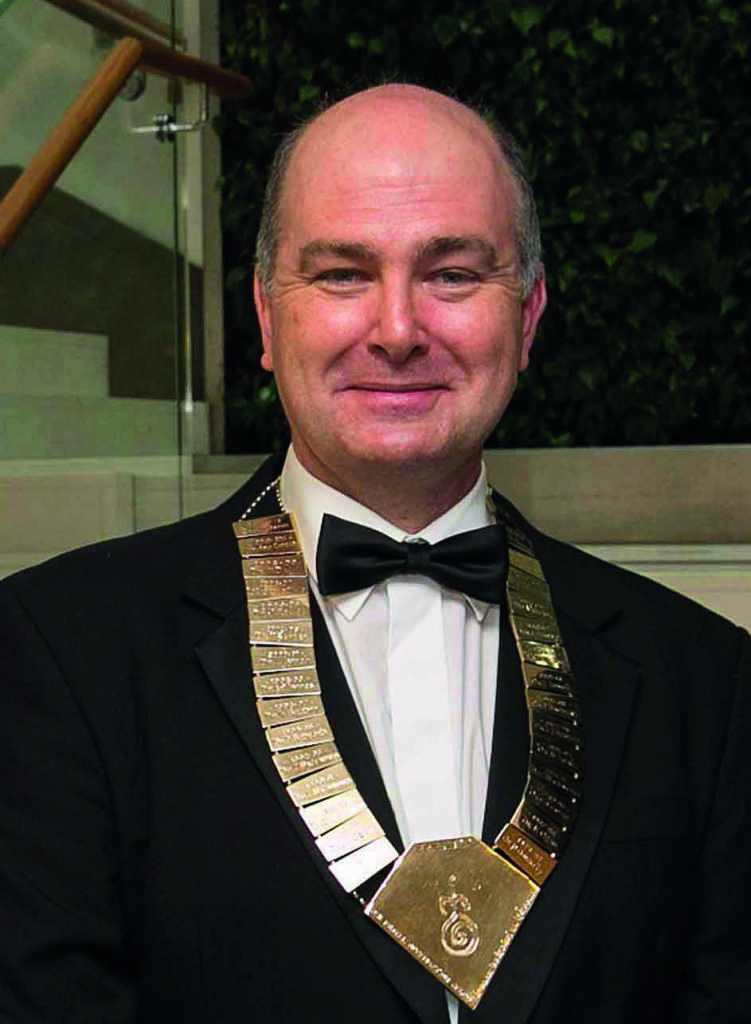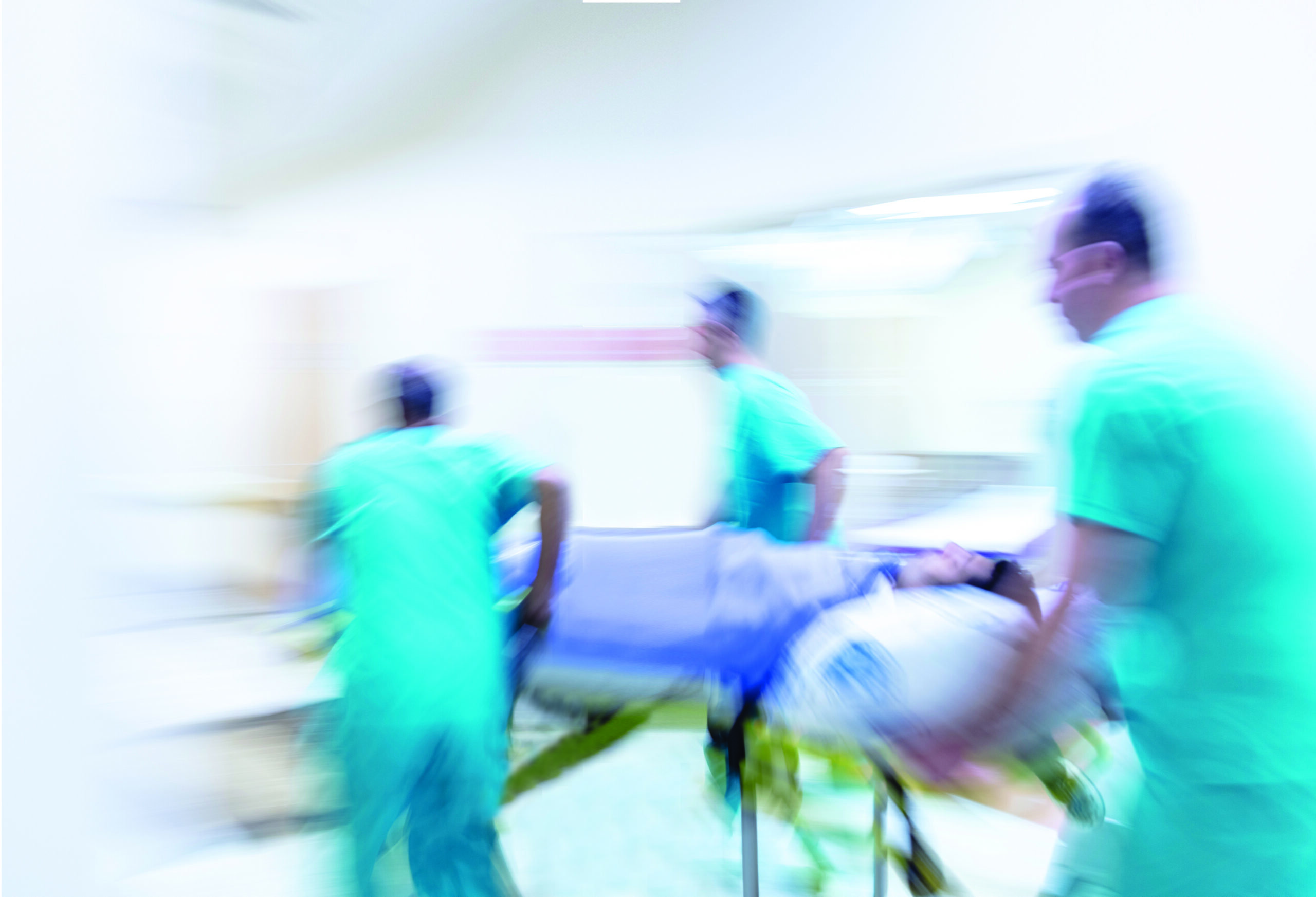Covid-19 has caused significant changes in how emergency departments (EDs) are configured due to infection control guidelines. David Lynch examines the potential long-term impact of the pandemic on EDs and emergency medicine
In February 2021, Dr Emily O’Conor (@eoconor209), Consultant in Emergency Medicine at Connolly Hospital, Blanchardstown and former President of the Irish Association for Emergency Medicine (IAEM), tweeted: “Flow through ED [emergency department] hugely improved with space and staff. Can we keep this up as non-Covid care gets back up to speed? That is the challenge for @HSELive @paulreiddublin @DonnellyStephen.”
The tweet was ‘liked’ over 60 times including by many doctors and healthcare professionals working in EDs and within emergency medicine (EM). The pandemic has created significant restructuring challenges within EDs, in order to comply with physical distancing requirements and care for patients with suspected or confirmed Covid-19.
However, the drop in elective work and non-Covid patients presenting, as well as other contributing factors, has led to a welcome fall in the number of patients on trolleys and quicker patient flow within the hospital system compared to the pre-pandemic reality. But with the roll-out of vaccination and the planned opening up of society, there will be an increase in scheduled care and patients presenting at EDs.
So, will EDs return to what was ‘business as usual’ before the devastating arrival of Covid-19? Emergency medicine doctors contacted by the Medical Independent (MI) certainly hope not.
Capacity
Last year the IAEM released a statement saying that “emergency departments (or hospitals) cannot be allowed to become crowded again”. At the same time, the Association published a document called Resetting Care in Ireland’s Emergency Departments.
“The… Government must address the deficit in acute hospital beds described in the findings of the Health Service Capacity Review 2018, ensuring that the 25-to-30 per cent of patients that need hospital admission from the ED move from the ED to a hospital bed immediately,” urged the IAEM. For its part, the HSE stated in its recently published National Service Plan that “the EDs within our 26 adult receiving hospitals have remained open 24/7 [during the pandemic] and will continue to do so through 2021. Our hospital staff have worked extremely diligently to put in place safe care arrangements and processes in response to Covid-19.”
Innovation and adaptability of the system and its staff has allowed for tangible changes to be made with minimal red tape
“The priorities for acute hospital service delivery for 2021 are strongly focused on enhancing acute services and working towards alternative pathways of care that reduce the need to attend EDs or be admitted to the hospital.
“Acute services will work in an integrated way with community services to enable developments in community and primary care, which support people at home or as close to home as possible.”
Dr Orla Kelly, President of the Irish Emergency Medicine Trainees Association (IEMTA) and Specialist Registrar in Emergency Medicine at University Hospital Waterford, told MI that any return to crowding in EDs in the coming months should not be accepted. Dr Kelly said “the real ill-effect” of the Covid experience in EDs would be if “we didn’t harness the creativity, adaptability, and positive changes that have arisen from the pandemic”.
“Our departments have been restructured physically and operationally to maximise infection control procedures and to limit as much as possible cross contamination between patients and staff,” said Dr Kelly.

“Innovation and adaptability of the system and its staff has allowed for tangible changes to be made with minimal red tape. Trolley numbers dropped considerably, which means better care and outcomes for patients.
“The emergency department has been, and will always be, a reliable constant for patients in need, but it cannot continue to be an ever-expanding safety net for the health system.
“Unfortunately, however, as the number of patients presenting with Covid-19 falls and ‘normal’ services are recommenced, we are seeing a worrying return to ED crowding and the return of trolleys.
“We must not go back to crowding and corridor care, which is simply indefensible. That must be the legacy and major impact of Covid-19 on emergency medicine.”
Isolation facilities
Such concerns are echoed by Consultant in Emergency Medicine at Beaumont Hospital, Dublin, and former IMO President Dr Peadar Gilligan. He told MI the “real challenge” for hospitals during the pandemic was to identify places where they could safely manage patients with infectious disease.
“That’s because a lot of Irish hospitals don’t have the number of isolation facilities that they need to have,” Dr Gilligan said. “In fact, I don’t think any hospital in Ireland has adequate isolation facilities that are required to deal with the pandemic on an ongoing basis.”
“On the positive side, a lot of emergency departments noticed in the initial stages of Covid that they were able to get patients who required hospitalisation into beds more quickly than historically has been the case.” This was because hospitals were not using all their available capacity, “therefore patients could be moved through the system” more quickly.
“That really reflects the argument that we have been having for years, saying that you cannot safely run a hospital at around 97 per cent occupancy… if you run a hospital at anything over 85 per cent occupancy you are going to have challenges meeting waiting list requirements and in delivering unscheduled and emergency care in particular.”
Is he concerned that, with the coming rise in non-Covid and scheduled care, hospital crowding could increase?
“Yes, I’d be hugely concerned that would be the case because the reality is that patients have been waiting for procedures for some time now,” said Dr Gilligan.

“We haven’t had planned scheduled care happening in Ireland in the way it historically would have for over a year now…. If we go back to a situation where we are essentially occupying all the beds in the hospital system all of the time, inevitably we are going back to a situation with large numbers of patients waiting in emergency departments and having their care and the care of others compromised by that.
“The learning from Covid has to be if we don’t have the capacity in the system then we have to plan it that the occupancy levels do not exceed 85 per cent. That inevitably means that waiting lists are going to get longer unless we access that care in other ways through the system.”
In Ireland, Dr Gilligan argued, there has been a “huge emphasis on day case provision, expedited admissions, reduction in length of stay in hospitals”. However, he said “the reality is that we don’t have the number of beds that we need for the system. This has been highlighted in reports dating back over 20 years now.” Dr Gilligan said “at least” 5,000 more hospitals beds were required in the acute hospital system.
“Covid, hopefully, will act as a reminder and a driver to the development of the service from a capital and staffing perspective.”
He conceded, however, there may be post-pandemic challenges in terms of financing capital infrastructure.
On the issue of extra bed capacity, the 2018 capacity review recommended an increase of 2,590 acute hospitals beds by 2031 to support the projected need for services in the years ahead.
“Work continues in the delivery of this capacity across the system. Capacity projects delivered to date include new acute ward blocks in Waterford University Hospital; South Tipperary General Hospital; and University Hospital Limerick,” said a Department of Health spokesperson last month.
“It should also be noted that not all additional beds require capital funding. The investment in acute bed capacity provided in Budget 2021 represents a significant step towards achieving the recommendations in the 2018 Health Service Capacity Review.
“Delivery of additional capacity continues to be a key priority in the capital plan.”
Speaking to MI in late 2020, the IAEM President and Consultant in Emergency Medicine at Sligo University Hospital Dr Fergal Hickey said that long-standing concerns over bed capacity in the hospital sector had been “significantly exposed” by the current pandemic. Referring to the capacity review, Dr Hickey said its recommendation on increasing bed capacity “hasn’t happened”.
“So the demand for healthcare is going up at a time that the number of beds that you can admit patients to hasn’t gone up in parallel. Even though we know we have this problem, it just has not been addressed.” Dr Hickey acknowledged the recent improvement in ICU capacity. He added that he knew the matter of increasing beds in the sector “isn’t easy to fix”.
“If you decide to build an additional ward, that takes time, money, planning process, design, etc, and that’s slow. But if you don’t start, you will never finish; that is a concern my colleagues would have. We know what the problem is, we know what the solution is – we need to get on with it.”
‘Boarded’ in EDs
Dr Gilligan said emergency medicine doctors are concerned that, in some hospitals, there have been occasions when patients “requiring admission are ‘boarded’ in the emergency department for long periods”.
Overall, he said it is “really important that we don’t go back to a situation where we have significant numbers of people on trolleys in emergency departments pending a ward bed becoming available to them”. Peering into the future, IEMTA President Dr Kelly said for emergency medicine, “there is potential for good and bad effects” as with all such major shocks to a system.
“You cannot describe the effects of Covid-19 on any sector of the healthcare system without paying significant attention to the human factors. The emotional toll of the pandemic on all healthcare workers is multi-faceted. Rotas are frequently changed to facilitate surges as well as last-minute sick or isolation leave for colleagues.
“Different specialities have seen great fluctuation in their workload, either the cancelling of elective work, or inpatient workload being exponentially increased. Staff are reticent to visit family members for fear of making loved ones sick.”
Dr Kelly said that, in general, many of the negative effects stem from a feeling of uncertainty.
“The uncertainty of when it will ‘end’ or when there will be a sense of normality, whether it’s safe to go home, or whether there will be sufficient capacity to look after our patients,” she said.
“This uncertainty is an inevitable and unavoidable consequence of an evolving situation and we are learning to adapt to this environment.”
Career progression concerns raised in EM trainee survey
The Irish Emergency Medicine Trainees Association (IEMTA) conducted a trainee survey in November and its results were published in the IEMTA’s newsletter last month.
“I think the overall positive message from the survey is that 80 per cent of CSTEM [Core Specialist Training in Emergency Medicine] and ASTEM [Advanced Specialist Training in Emergency Medicine] trainees would recommend CSTEM/ASTEM training to colleagues, and similar numbers intend to continue on to higher training to become consultants in emergency medicine in Ireland,” IEMTA President Dr Orla Kelly told the Medical Independent.
“It demonstrates a sustainable training scheme that will continue to recruit high-quality candidates and trainees that are satisfied in their positions.
“This retention of trainees ties into a recent increase in specialist registrar posts this year and I hope will result in increased consultant posts in the near future.”
Dr Kelly noted the survey showed that non-scheme trainees have expressed concern regarding their career progression, with 75 per cent citing this concern as a factor when deciding whether or not to stay in Ireland.
“It is well known that this is an issue for all specialties, but the proportion of non-scheme doctors in EM is higher than in other specialties because of the need to staff so many departments,” she said.
“Now is certainly not the time to be exporting doctors and there is some work to be done on the retention of non-scheme trainees in EM.”
Dr Kelly also highlighted that “wellness is an area for improvement that has been highlighted… with the responses of 36 per cent of CSTEM trainees, 44 per cent of non-scheme trainees, and 48 per cent of ASTEM trainees being indicative of poor wellbeing and risk of depression”.
Dr Kelly said these were “startling statistics”. However, she said it is an issue “that emergency medicine in general and IEMTA in particular is committed to addressing”.
“IEMTA has a three-pronged wellbeing initiative comprised of two serving committee members acting as wellbeing officers, communication with each department regarding individual practices to ensure staff wellbeing, and an upcoming wellness compendium.
“Despite these efforts, there will have to be meaningful change to both work pressures and work practices for EM to continue to be a sustainable full-time career choice if there is no improvement in the trend of these responses.”
Upcoming IEMTA conference
The Irish Emergency Medicine Trainees Association (IEMTA) is holding its annual scientific meeting (ASM) online on Saturday 24 April.
“EM trainees have seen a year like no other, that’s for sure,” said IEMTA President Dr Orla Kelly.
“This year the ASM will be focusing on a non-Covid topic – education in medicine,” she said.
“We have taken the opportunity to focus on a different aspect of our day-to-day jobs and hopefully give a reprieve from virology. The pandemic has meant that very little face-to-face teaching can occur and our training days have mainly switched to online conference platforms.
“Medical students and NCHDs, as well as educators, have had to adapt to this new form of learning. This year’s conference will focus on how best to deliver education to learners through online, in person, and simulation, with contributions from some of the leading advocates in the business. It is a packed day, and one that is relevant to all specialities, not just emergency medicine.”
*For more information on the IEMTA meeting, refer to the Association’s Twitter account @IrishEMtrainees













Leave a Reply
You must be logged in to post a comment.